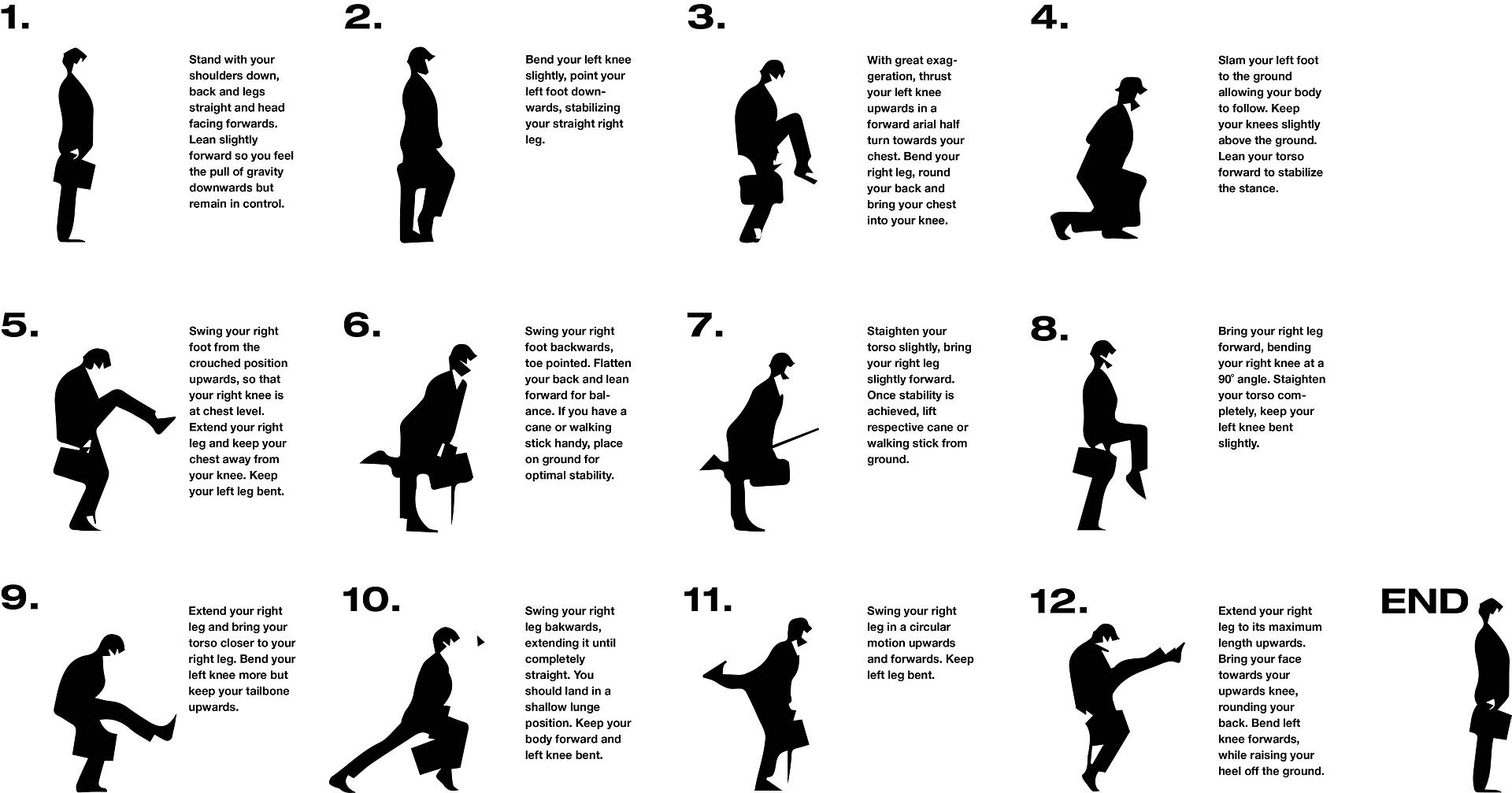Silly Walks
Is there a right way to walk? Walking is one of those every day movements that is on auto pilot.We began walking around 1 year of age and never looked back. Our gait changes throughout our life, even daily as we adapt to a variety of surfaces and environments. We walk slow, fast or with a hitch in our step that is directed by our nervous system feedback from our body to brain and back again.
Watching someone walk with smooth easy steps is graceful. There is an efficiency of the body as it moves along the ground. You can see and feel how the body is synchronized when the gait is more fluid. When our structure is a bit off due to an injury or a tightness from some activity, it appears in our gait’s style and rhythm as an asymmetry or silly way of walking. The forces of our body are getting stuck or held somewhere in the body’s tissues. Then our function of walking is adapting. It may not be efficient and over time cause some physical issue such as back pain.
John Cleese is a great example of silly walks. The choreography is fun and his timing is repeated with each cycle of his step. Over a lifetime, how is his function going to change his structure? Quite significantly! Our bones and tissues respond to tension and compression that is present during movement. (See my “Whole Body Connecting Force” blog post). The shapes of our bones are like the stones near the ocean where the water over time has shaped the stones. Bones are not rigid structures but are a denser fascia. Bones actually bend and move where rocks do not. Any repetitive movement pattern will influence our structure. Form follows structure and form influences the structure.
Purposely walking silly as an exercise can change how your nervous system is working and bring us back to a relative normal gait pattern. The dynamic motion of walking silly challenges our muscles and fascia in ways that it normally does not move. When we move into diagonals and other directions, we are shifting the nervous system norms and waking up our proprioception. The body begins to pay attention. You will find that after a few minutes of walking silly and returning to your normal gait, it will feel more fluid.
Try walking differently in some way. Be sure you are warmed-up by doing easy movements of your joints. Focus your eyes with a distant and peripheral vision as you move. I have a series of short videos coming up in the member’s access for guiding a warm-up, and a series of silly walks. Please do not try to walk like John Cleese.


